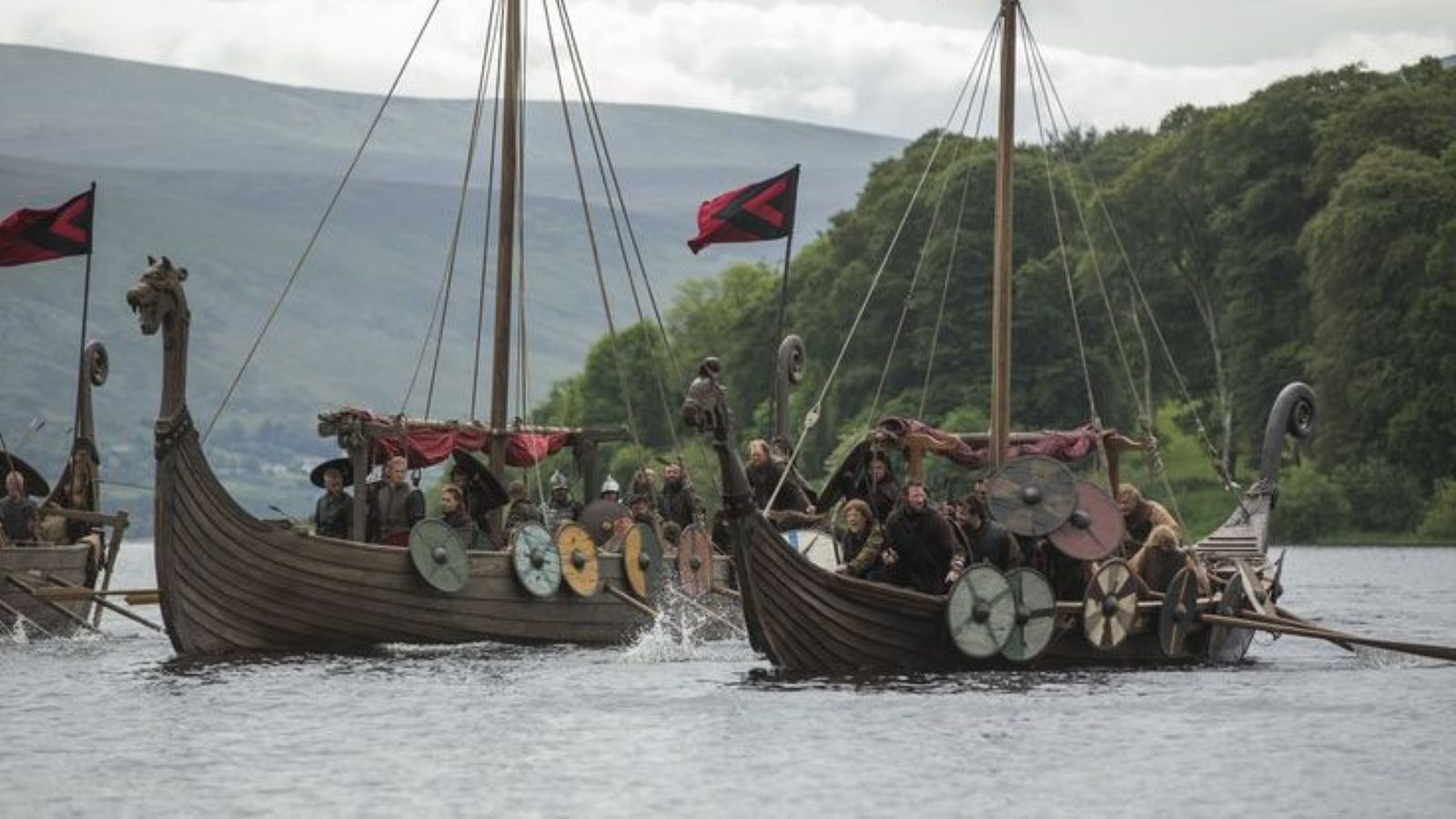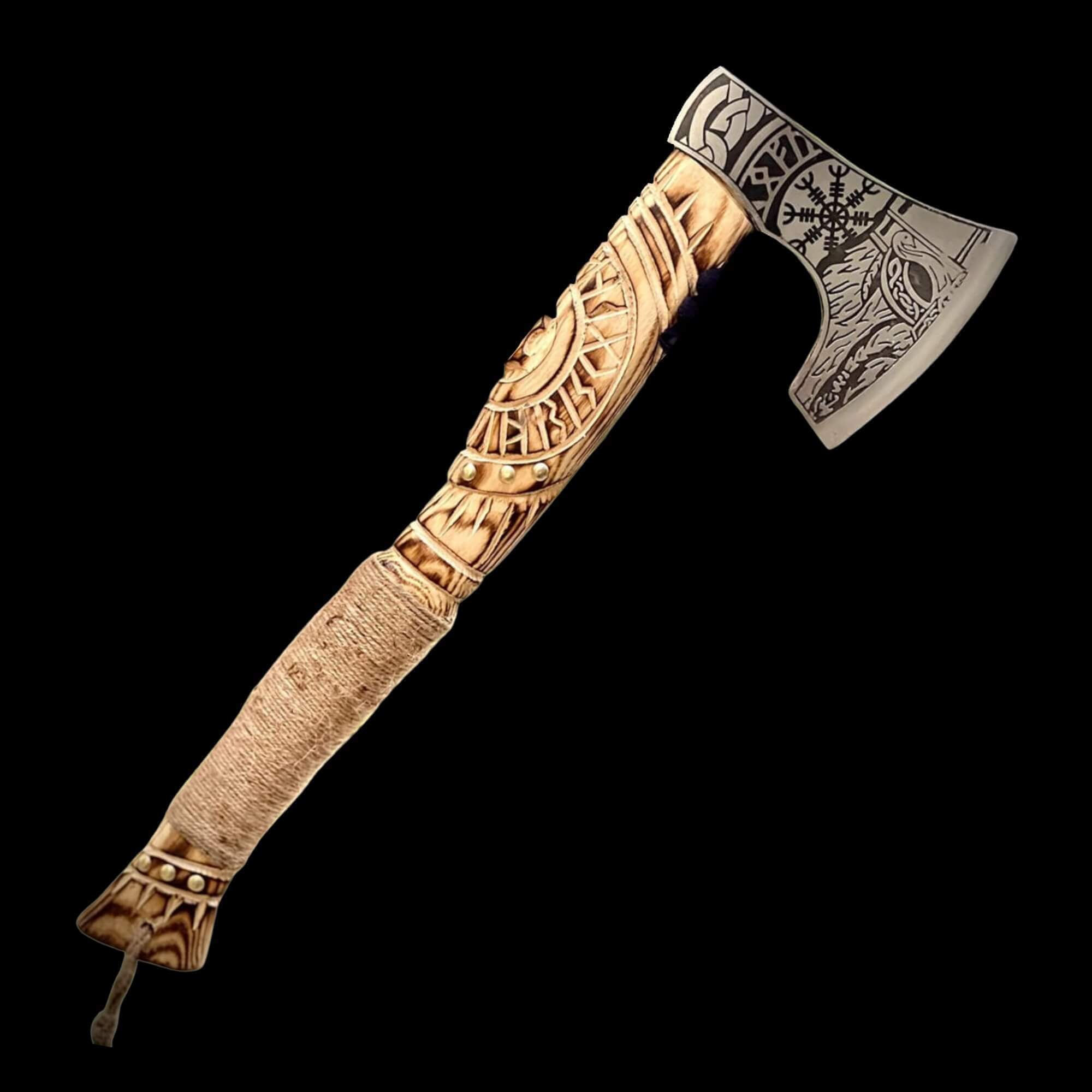
Blood on the Tide: The First Viking Raids on England
The Anglo-Saxon Chronicle's entry for the year 793 CE begins with ominous signs: "In this year dire portents appeared over Northumbria, and sorely frightened the people. They consisted of immense whirlwinds and flashes of lightning, and fiery dragons were seen flying in the air." What followed would change the course of English history forever – the first Viking raid on Lindisfarne.
The Ravens Descend: Lindisfarne, 793 CE
On June 8th, 793, longships appeared on the horizon of the Holy Island of Lindisfarne. The monastery, a beacon of Christian learning and Anglo-Saxon culture, was caught completely unprepared. The Norse raiders struck with devastating efficiency, looting the monastery's treasures, destroying sacred manuscripts, and killing or enslaving many of the monks. The attack sent shockwaves through Christian Europe, marking the beginning of the Viking Age in England.
Why Lindisfarne?
The choice of Lindisfarne was no accident. The Vikings displayed remarkable strategic intelligence in their target selection. The island's wealth and poor defenses made it an ideal target, while its tidal nature isolated it from mainland help. The monastery's location provided easy access from the sea, and its reputation as a center of Christian learning meant the raid's impact would reverberate throughout Christian Europe. This combination of practical and symbolic value made Lindisfarne the perfect target for announcing the Vikings' arrival in England.
The Pattern of Early Raids
Following Lindisfarne, the Vikings established a brutal but effective raiding pattern that would define their early incursions into England. They perfected the art of swift, surprise attacks from the sea, primarily targeting wealthy, isolated religious communities. Their strategic use of weather and tides, combined with quick retreats before local forces could respond, made their raids devastatingly effective. By 795, they had struck Jarrow, another famous monastery, and begun raids on the Irish coast. These early attacks were not about conquest – they were carefully planned raids for wealth and slaves.
Viking Battle Tactics
The success of these early raids stemmed from the Vikings' sophisticated military approach. Their superior naval technology produced ships capable of both ocean travel and river navigation, allowing them to strike deep inland or escape quickly to sea. The element of surprise was their greatest weapon, as they could attack from unexpected directions and vanish before local forces could organize a response. Their raid parties operated with clear leadership and discipline, while their advanced weapons and fighting techniques gave them a crucial edge in combat. This combination of tactical advantages made them a terrifying and effective force.
English Response and Adaptation
Initially, the English response was disorganized and ineffective. The decentralized nature of Anglo-Saxon kingdoms, highlighted in our previous article, proved disastrous when facing these new threats. Local ealdormen struggled to marshal forces quickly enough to counter the raiders' hit-and-run tactics.
The Psychology of Terror
The Vikings understood and deliberately cultivated psychological warfare in their raids. Their targeting of religious sites struck at the heart of Anglo-Saxon spiritual security, while their public displays of violence created lasting fear throughout the population. The unpredictable nature of their attacks kept coastal communities in constant anxiety, never knowing where the next raid might fall. Perhaps most devastating was their practice of taking slaves, which tore apart the fabric of community bonds and created a lasting atmosphere of vulnerability and terror.
From Raids to Settlement
By the 830s, the pattern of Viking activity began to change. Raiders started to overwinter in England, establishing temporary bases on coastal islands. This shift marked the transition from pure raiding to the beginning of settlement ambitions, setting the stage for the massive invasions that would follow.
Cultural Impact
The initial raids profoundly transformed Anglo-Saxon society in ways that would last generations. Monasteries began relocating inland, seeking safety from coastal raids, while coastal communities developed sophisticated early warning systems. The first defensive networks were established, marking the beginning of organized resistance. A new genre of religious literature emerged, as clergy and scholars struggled to interpret the Viking threat within their Christian worldview, often seeing the raiders as divine punishment for Anglo-Saxon sins. The craft of manuscript preservation evolved as well, with many precious texts being moved to safer locations inland.
Legacy of the First Raids
The raids of the late 8th century were just the beginning, but they fundamentally changed England's relationship with the sea. No longer was the ocean solely a source of trade and prosperity – it had become a highway for terror. These early raids exposed the vulnerabilities in Anglo-Saxon society and set in motion changes that would reshape England's political and military structure.




